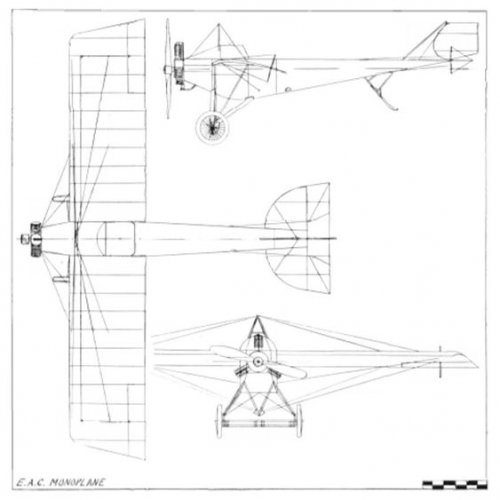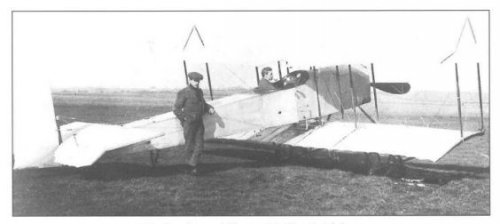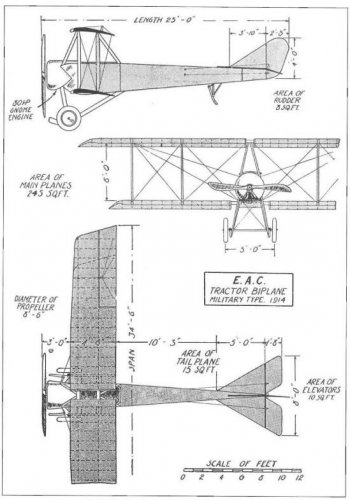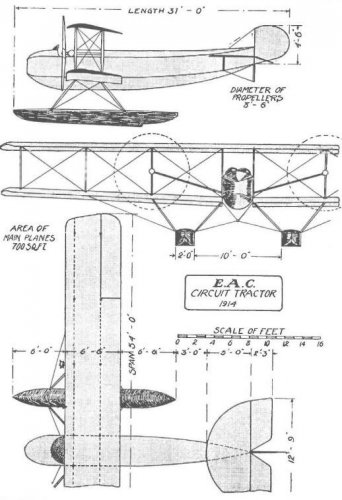- Joined
- 28 January 2008
- Messages
- 628
- Reaction score
- 446
Eastbourne Aviation Company (EAC) Ltd Aircraft 1912-1924
Founded by Frederick Bernard Fowler in 1912, the E.A.C first came to prominence with flight instruction and later seaplane instruction. In 1913 the Frank Hucks Waterplane Works merged with the Eastbourne Aviation Company to be known as Eastbourne Aviation Company Limited. Frank was the brother of “Benny” Hucks (of Hucks Starter fame) who was also EAC company secretary at one stage.
The firm used Farman aircraft and three locally produced Bleriot monoplanes for flight instruction. As well as the four aircraft that follow, the firm also converted an Oldsmobile automobile to transport aircraft by road utilizing a custom built trailer. All four EAC designs only existed as single examples.
During the war the company specialised in flight training and a number of aircraft were produced under Government contracts at the Seaplane Base factory.
Royal Aircraft Factory Be.2c (@ 12 built)
Maurice Farman S11 (@ 40 built)
Avro 504 (@ 206 built)
After the airfield became a RNAS Training Station over 120 men learned to fly there.
In 1921 Fowler went to Japan with Colonel the Master of Sempill Mission to organise and train the Imperial Japanese Navy Flying Branch.
The firm continued with pleasure and photographic flights as well as flight training post-war and the firm ceased trading in 1924.
As an aside, designer Glasser returned to Europe in 1914, was rejected by the Swiss Air Corps and joined Luft Verkehrs Gesellschaft (LVG) as a test pilot and instructor. In 1917 he was working in Potsdam repairing Rumpler biplanes.
The following entries come from the following sources:
British Aircraft 1808-1914 - Peter Lewis [Putnam]
A History of the Eastbourne Aviation Company 1911-1924 - Lou McMahon and Michael Partridge [Eastbourne Local History Society] ISBN 0-9504560-8-X
Eastbourne Remembered - Mick Hymams [Lulu] ISBN 1326210637
The Aeroplane magazine 6 February 1913
Flight magazine 3 May 1913
L’Aerophile 15 September 1913
Flight magazine 7 March 1914
Flight magazine 21 March 1914
Flight magazine 18 April 1914
Flight magazine 11 December 1914
Air Pictorial March 1979
Founded by Frederick Bernard Fowler in 1912, the E.A.C first came to prominence with flight instruction and later seaplane instruction. In 1913 the Frank Hucks Waterplane Works merged with the Eastbourne Aviation Company to be known as Eastbourne Aviation Company Limited. Frank was the brother of “Benny” Hucks (of Hucks Starter fame) who was also EAC company secretary at one stage.
The firm used Farman aircraft and three locally produced Bleriot monoplanes for flight instruction. As well as the four aircraft that follow, the firm also converted an Oldsmobile automobile to transport aircraft by road utilizing a custom built trailer. All four EAC designs only existed as single examples.
During the war the company specialised in flight training and a number of aircraft were produced under Government contracts at the Seaplane Base factory.
Royal Aircraft Factory Be.2c (@ 12 built)
Maurice Farman S11 (@ 40 built)
Avro 504 (@ 206 built)
After the airfield became a RNAS Training Station over 120 men learned to fly there.
In 1921 Fowler went to Japan with Colonel the Master of Sempill Mission to organise and train the Imperial Japanese Navy Flying Branch.
The firm continued with pleasure and photographic flights as well as flight training post-war and the firm ceased trading in 1924.
As an aside, designer Glasser returned to Europe in 1914, was rejected by the Swiss Air Corps and joined Luft Verkehrs Gesellschaft (LVG) as a test pilot and instructor. In 1917 he was working in Potsdam repairing Rumpler biplanes.
The following entries come from the following sources:
British Aircraft 1808-1914 - Peter Lewis [Putnam]
A History of the Eastbourne Aviation Company 1911-1924 - Lou McMahon and Michael Partridge [Eastbourne Local History Society] ISBN 0-9504560-8-X
Eastbourne Remembered - Mick Hymams [Lulu] ISBN 1326210637
The Aeroplane magazine 6 February 1913
Flight magazine 3 May 1913
L’Aerophile 15 September 1913
Flight magazine 7 March 1914
Flight magazine 21 March 1914
Flight magazine 18 April 1914
Flight magazine 11 December 1914
Air Pictorial March 1979




